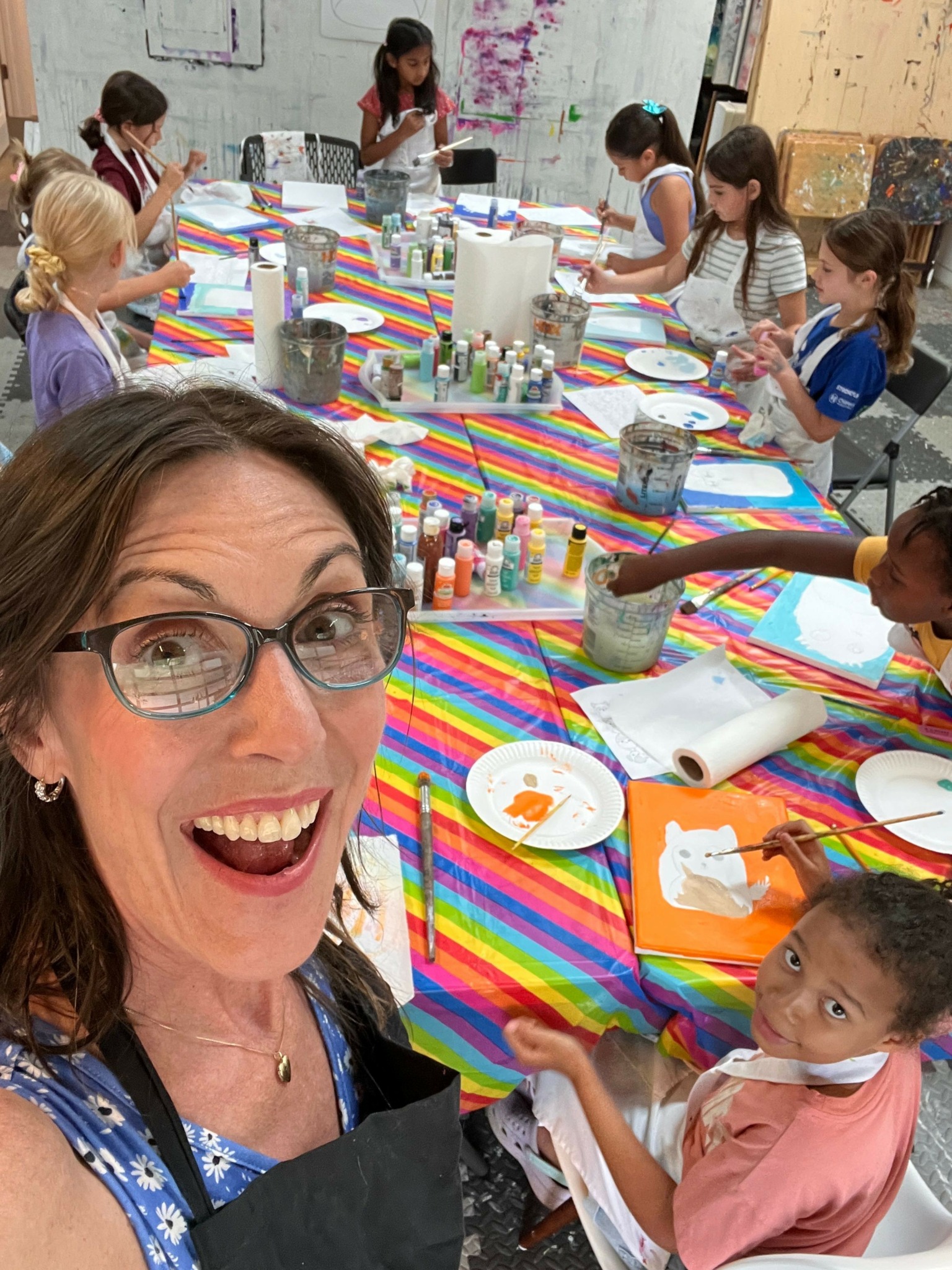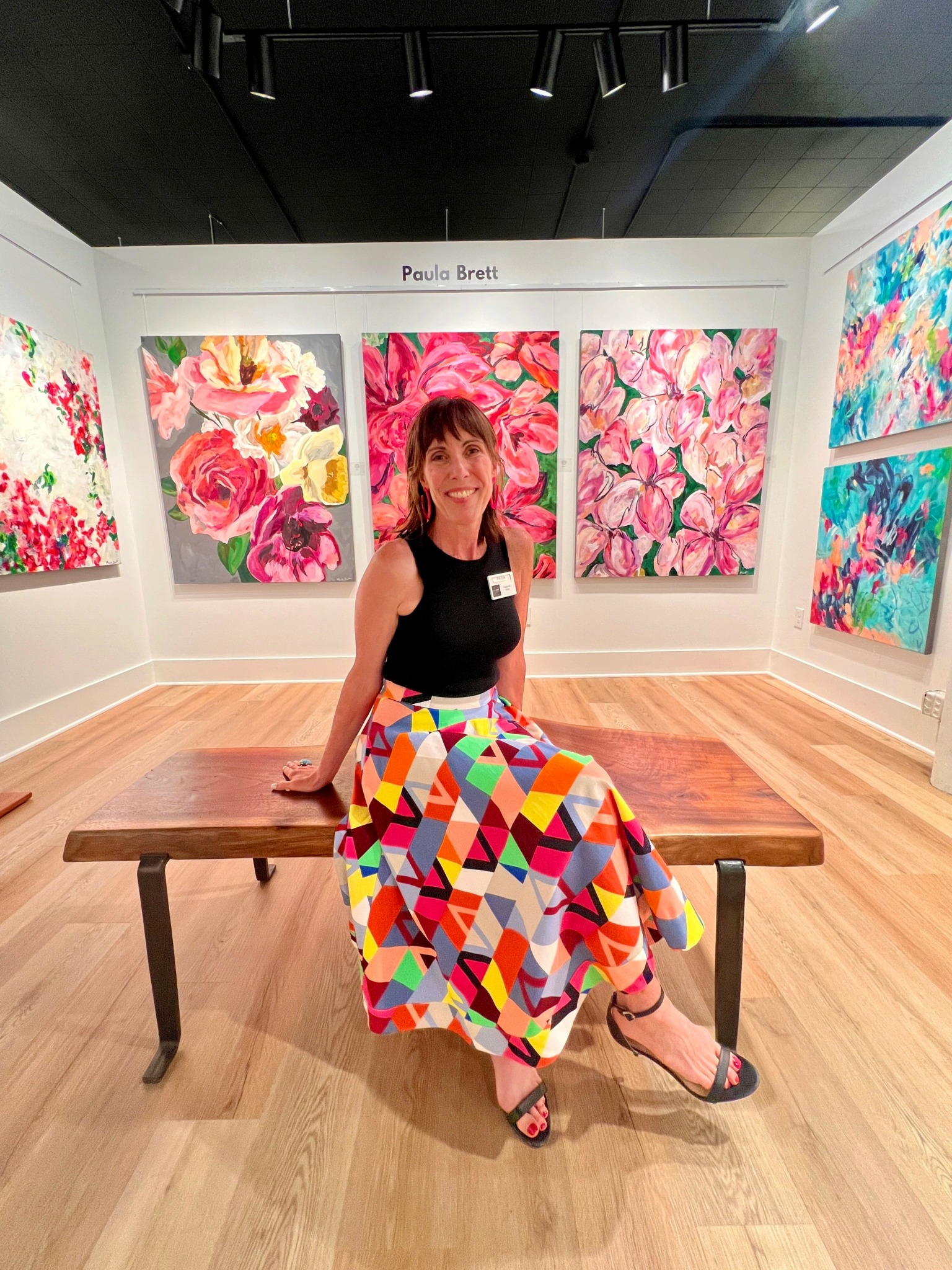We recently connected with Paula Brett and have shared our conversation below.
Hi Paula , thanks for joining us today. How did you learn to do what you do? Knowing what you know now, what could you have done to speed up your learning process? What skills do you think were most essential? What obstacles stood in the way of learning more?
I learned what I do through a mix of formal training, personal exploration, and years of showing up to the canvas with curiosity. My background in art history gave me a foundation, but most of my growth came from teaching others and learning alongside them. Every time I guided a student through a creative block or saw their confidence grow, it helped me deepen my own understanding as both an artist and facilitator.
If I could have sped up my learning, I would have trusted my instincts sooner and worried less about doing things the “right” way. So much of my best work happened when I allowed myself to play and follow what felt authentic to me.
The most essential skills have been adaptability, emotional awareness, and the ability to listen to myself, my students, and the creative process.
The biggest obstacles were self-doubt and perfectionism. For a long time, I thought I had to prove myself through achievement instead of trusting that my own intuition and experience were enough. Once I let go of that, everything opened up. I became a better teacher, a more expressive artist, and a lot more at ease in my work.

Great, appreciate you sharing that with us. Before we ask you to share more of your insights, can you take a moment to introduce yourself and how you got to where you are today to our readers.
I’m an artist, instructor, and expressive arts facilitator based in Roswell, Georgia. I originally planned to study biology, but I fell in love with art history and modern art in college, and that completely changed the direction of my life. Over time, I realized that art wasn’t just something I loved doing—it was how I connected with people and helped them connect more deeply with themselves.
Today, I run Creative Minds Art Afterschool Program, where children explore their creativity in a supportive, joyful environment. I also teach Contemporary Abstract Art to adults, helping students loosen up, trust their instincts, and find their own expressive style. My own artwork is primarily abstract, often inspired by nature, emotion, and music, with floral and landscape influences woven throughout.
What sets my work apart is the atmosphere I create. Whether I’m teaching or painting, my focus is on authenticity, play, and connection. I want people to feel safe to explore, make mistakes, and discover beauty in imperfection.
I’m most proud of the transformation I see in my students—the moment they realize they can trust their own creative voice. My work, both in the studio and the classroom, is about that spark of confidence and joy that creativity brings to life.

How can we best help foster a strong, supportive environment for artists and creatives?
In my view, society can best support artists and creatives by valuing the creative process as much as the final product. That means providing opportunities for learning, experimentation, and collaboration, and recognizing that creativity isn’t just a career—it’s a way of thinking and engaging with the world.
Access to affordable studio space, materials, and mentorship can make a huge difference, as can funding programs, grants, and residencies that allow artists to take risks and grow. Schools and communities can also nurture creativity by making art a visible, accessible part of daily life, rather than something separate or optional.
Equally important is creating a culture that celebrates creativity in all forms—encouraging people to try new things, make mistakes, and embrace the process of discovery. Supporting artists means supporting curiosity, expression, and the human imagination, which benefits everyone, not just those making art.

What’s the most rewarding aspect of being a creative in your experience?
For me, the most rewarding aspect of being an artist is witnessing the moment when creativity sparks, whether it is in my own work or in the students I teach. There is something magical about seeing an idea take shape on the canvas, watching someone trust their instincts, and realizing that they are capable of creating something uniquely their own.
Being a creative allows me to connect with people in a way that is deeply human. It is not just about the finished piece, it is about the process, the emotion, and the growth that happens along the way. The joy, discovery, and confidence that emerge through making art are what make all the challenges worthwhile, and they remind me why I do this every day.
Contact Info:
- Website: https://paulambrett.com
- Instagram: @paula_brett_art
- Facebook: https://www.facebook.com/ppbrett



